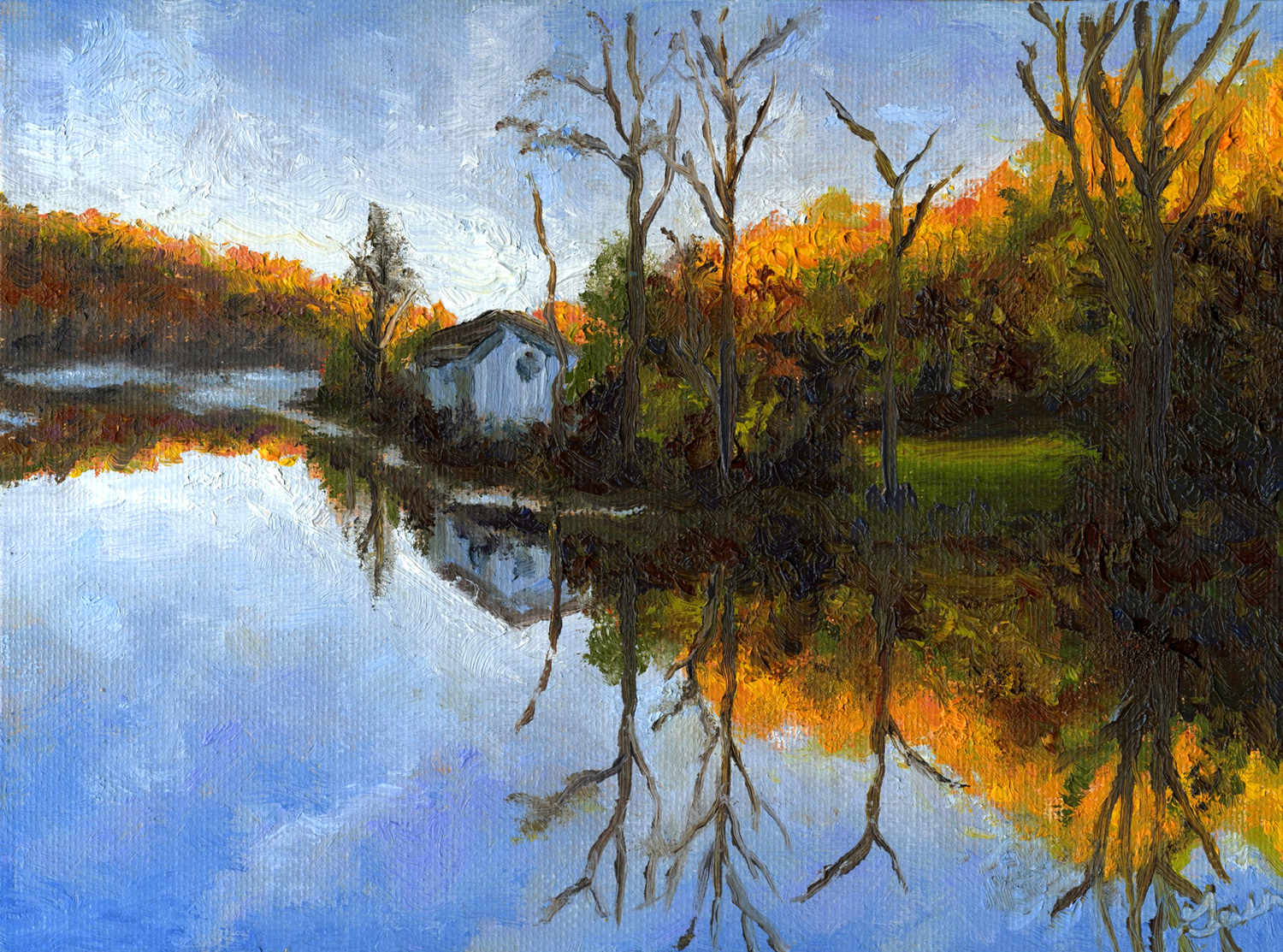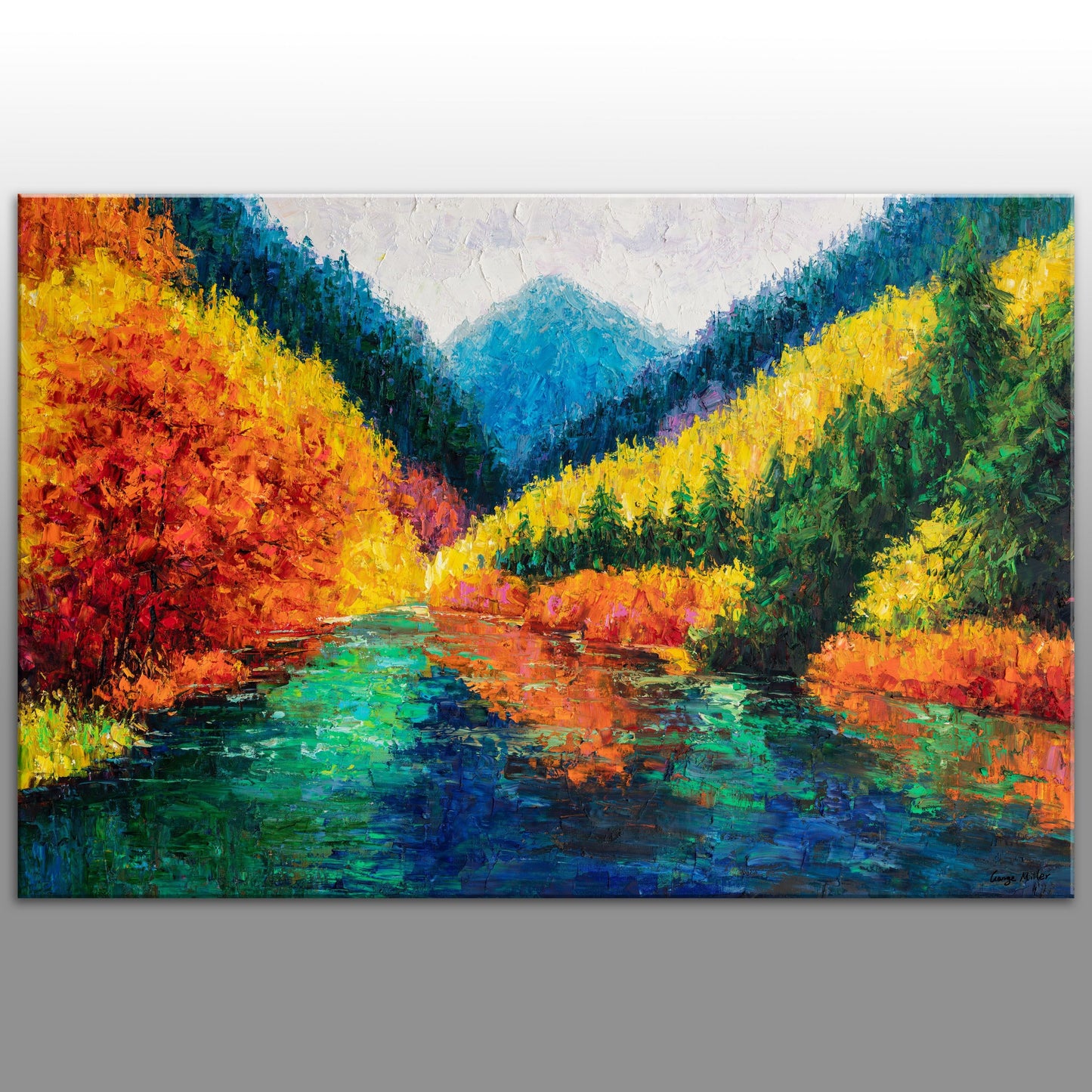Uncover Breathtaking One-of-a-kind Oil Paintings for Sale Online
Uncover Breathtaking One-of-a-kind Oil Paintings for Sale Online
Blog Article
Discovering All Concerning Oil Paints: An Overview to Comprehending Their Charm and Value
Oil paintings have captivated audiences for centuries, supplying a glimpse right into the creative mastery of various periods. Their abundant history is linked with cutting-edge methods and extensive emotional expression. Understanding the products and methods behind these artworks can boost gratitude. In addition, the market for oil paints offers chances for collectors and investors alike. As one discovers this fascinating globe, the concern occurs: what makes an oil paint really beneficial?
The Background of Oil Paint: A Journey Via Time
Oil painting has origins that date back to ancient times, it genuinely thrived throughout the Renaissance, when musicians found its convenience and rich shade potential. Early examples can be mapped to the 7th century, with techniques advancing notably throughout societies. The medium ended up being prominent in Northern Europe in the 15th century, especially via the works of artists like Jan van Eyck, that pioneered its use for in-depth realism and vivid colors. This duration noted a separation from tempera paints, enabling higher deepness and texture. As oil painting spread, it influenced plenty of artists, causing work of arts by renowned figures such as Leonardo da Vinci and Rembrandt. The medium's tradition proceeds, forming the art globe well into modern times.
Comprehending Oil Paints: Products and Techniques
As musicians discover the globe of oil paints, they encounter a diverse range of products and strategies that specify this medium. The primary elements of oil paint consist of pigments, which supply shade, and drying out oils, such as linseed, that bind the pigments and promote application. Various additives can modify the paint's texture and drying time, improving convenience. Strategies like glazing, where transparent layers are built up, and impasto, which involves applying thick paint, enable different visual results. Additionally, making use of brushes, palette knives, and also fingers can create distinct structures and finishes. Recognizing these materials and techniques enables musicians to totally share their imagination and accomplish the preferred impact in their artwork.
The Role of Color in Oil Paints
Color plays a critical role in oil paints, influencing both visual appeal and psychological vibration. Understanding shade theory fundamentals, including the partnerships between tones, can improve an artist's capacity to convey state of mind and atmosphere. In addition, mastering shade mixing strategies permits better depth and splendor in a paint's combination.

Color Concept Fundamentals
Comprehending color theory is vital for musicians functioning with oil paints, as it develops the structure for developing harmonious and aesthetically appealing make-ups. Color concept encompasses the research of exactly how colors connect, the color wheel, and the relationships between key, additional, and tertiary shades. Artists make use of complementary shades to improve contrasts and develop prime focus, while comparable colors advertise unity and cohesiveness within a piece. In addition, the principles of cool and cozy colors affect the understanding of depth and room in a painting. Grasping these concepts allows musicians to manipulate shade efficiently, guiding the customer's eye and communicating their designated message. Mastery of color theory eventually enriches a musician's ability to communicate feelings and ideas via their job.
Emotional Influence of Color
The psychological effect of shade in oil paintings plays a critical function in just how viewers view and attach with art work. Colors stimulate details feelings and state of minds, influencing the audience's psychological state. Warm colors like oranges and reds can develop a feeling of heat and power, while trendy tones such as blues and environment-friendlies often evoke calmness or introspection. Artists strategically choose color palettes to enhance narrative elements, guiding the audience's psychological trip. The saturation and comparison of colors even more enhance these impacts, attracting interest and producing focus. Eventually, the interaction of shades in oil paints not only improves their aesthetic charm but also acts as an effective tool for emotional expression, enriching the viewer's experience and analysis.
Color Mixing Techniques
While many facets of oil paint add to the overall make-up, grasping color blending methods is vital for achieving wanted impacts and depth. Shade blending can be come close to via different techniques, including the additive and subtractive processes. Additive mixing entails incorporating colors of light, while subtractive blending depends on pigments, where colors mix to produce brand-new tones. Artists usually use a limited scheme to create unified works, understanding the partnerships between key, secondary, and tertiary shades. Techniques such as glazing and scumbling better enhance deepness and luminosity. By skillfully blending colors, a musician can evoke emotions, develop focal points, and achieve a feeling of realism, inevitably boosting the painting's aesthetic and emotional influence.
Famous Oil Painters and Their Iconic Works

Well known for their proficiency of shade and technique, oil painters have developed some of the most popular artworks in history. Distinguished musicians like Vincent van Gogh captivated audiences with his stirring brushwork in "Starry Evening," while Claude Monet's "Impact, Sunrise" laid the groundwork for Impressionism. Leonardo da Vinci's "Mona Lisa" stays a long-lasting icon of artistic brilliant, showcasing his ability in recording human expression. Rembrandt's "The Evening Watch" highlights his cutting-edge use of light and shadow. Other significant numbers consist of Pablo Picasso, who reinvented contemporary art with his vibrant trial and error in jobs like "Les Demoiselles d'Avignon," and Georgia O'Keeffe, whose vivid representations of landscapes and flowers aided specify American innovation. Each artist's unique style added significantly to the oil paint landscape.
Exactly how to Assess the Quality of an Oil Paint
Examining the high quality of an oil painting entails a cautious assessment of workmanship methods, as well as an evaluation of color and composition. Observing brushwork, layering, and the application of paint can disclose the artist's skill degree. Furthermore, the interaction of colors and the total plan of elements add significantly to the paint's aesthetic worth.
Evaluating Craftsmanship Methods
A careful assessment of workmanship techniques is crucial for identifying the quality of an oil paint. Critics ought to first check out the application of paint; thick, textured brushstrokes may recommend a knowledgeable hand, while extremely consistent applications might indicate an absence of deepness. oil paintings for sale. The layering method is additionally vital; the existence of lusters and varied thickness can boost luminosity and intricacy. Additionally, the high quality of the products used, such as the canvas and pigments, plays a considerable duty in sturdiness and total visual. Attention to detail in components like edges and shifts between shades mirrors the artist's commitment to their craft. Inevitably, these techniques add oil paintings for sale to the paint's psychological impact and market price, functioning as indications of the artist's skill and intent
Evaluating Color and Composition
While examining the top quality of an oil paint, one must focus on the interplay of color and structure, as these components are fundamental to the art work's general influence. Color options can stimulate emotions and establish mood; as a result, the artist's combination must be analyzed for consistency and comparison. A well-balanced structure guides the visitor's eye and creates a feeling of unity. Musicians usually use strategies like the regulation of thirds or leading lines to boost aesthetic passion. In addition, the usage of light and shadow can add depth, boosting the three-dimensionality of the paint. Eventually, an effective oil painting marries shade and make-up, involving the customer and inviting a deeper appreciation of the artist's vision and method.
Caring for and Preserving Oil Paintings
Appropriate care and conservation of oil paints is necessary for keeping their stability and long life. To secure these artworks, it is important to display them far from direct sunlight, which can create fading and discoloration. Maintaining a secure atmosphere with controlled temperature level and humidity further help in avoiding damages. Cleansing must be done delicately utilizing a soft, completely dry fabric, staying clear of any extreme chemicals that can hurt the paint or varnish. Normal assessments for indications of deterioration, such as fracturing or flaking, are recommended. When storing or moving oil paintings, correct cushioning and framework are required to prevent physical harm. Inevitably, persistent treatment contributes to the aesthetic allure and value of oil paints with time.
The Marketplace for Oil Paintings: Collecting and Spending
Understanding the market dynamics for oil paints is essential for investors and collection agencies alike. The worth of these artworks is influenced by different variables, including the artist's track record, historic significance, and present patterns. Enthusiasts often seek items that reverberate directly while considering potential gratitude in worth. Galleries and public auctions function as primary venues for trading, with prices varying based on demand and rarity. Purchasing oil paintings needs research study right into the marketplace, in addition to an understanding of credibility and provenance. Furthermore, arising artists may use chances for considerable returns, while developed names can command high costs. In general, a calculated strategy to accumulating can generate both visual enjoyment and monetary incentives.

Frequently Asked Concerns
What Are the Environmental Effects of Oil Paint Products?
The ecological impacts of oil painting materials include the launch of volatile organic compounds (VOCs), damaging waste generation, and source removal for pigments. These aspects add to air pollution and eco-friendly destruction, elevating concerns among environmentally conscious artists and customers.
Exactly How Do Various Canvases Impact Oil Painting Outcomes?
Various canvases influence oil paint results considerably. Texture, surface, and absorbency quality can change paint application, drying out times, and shade vibrancy. Artists typically pick specific canvases to accomplish preferred results and boost their artistic expression.
Can Oil Paintings Be Brought Back if Harmed?
If damaged, Oil paintings can undoubtedly be recovered. Professional conservators utilize various techniques to fix tears, clean surfaces, and address discoloration, making sure that the art work keeps its initial beauty and value for future generations.
What Are the Signs of an Original Oil Painting?
The signs of an original oil painting include visible brush strokes, texture variations, and an uneven canvas weave (oil paintings for sale). Additionally, authenticity may be validated via provenance, signatures, and the presence of a varnish layer one-of-a-kind to oil mediums
Exactly How Has Innovation Influenced Modern Oil Paint Techniques?
Innovation has greatly affected modern-day oil painting strategies by introducing electronic tools for planning, enhanced products for texture and longevity, and on the internet systems for sharing and offering art, consequently broadening artists' creative possibilities and target market reach. Oil paint has origins that date back to ancient times, it genuinely flourished during the Renaissance, when musicians discovered its adaptability and abundant color capacity. The psychological influence of color in oil paintings plays an essential function in how customers attach and regard with artwork. While numerous facets of oil paint add to the overall structure, grasping shade blending techniques is vital for attaining preferred effects and depth. Examining the quality of an oil paint entails a careful assessment of craftsmanship methods, as well as an evaluation of color and composition. While assessing the high quality of an oil painting, one need to concentrate on the interaction of shade and structure, as these aspects are essential to the art work's general effect.
Report this page